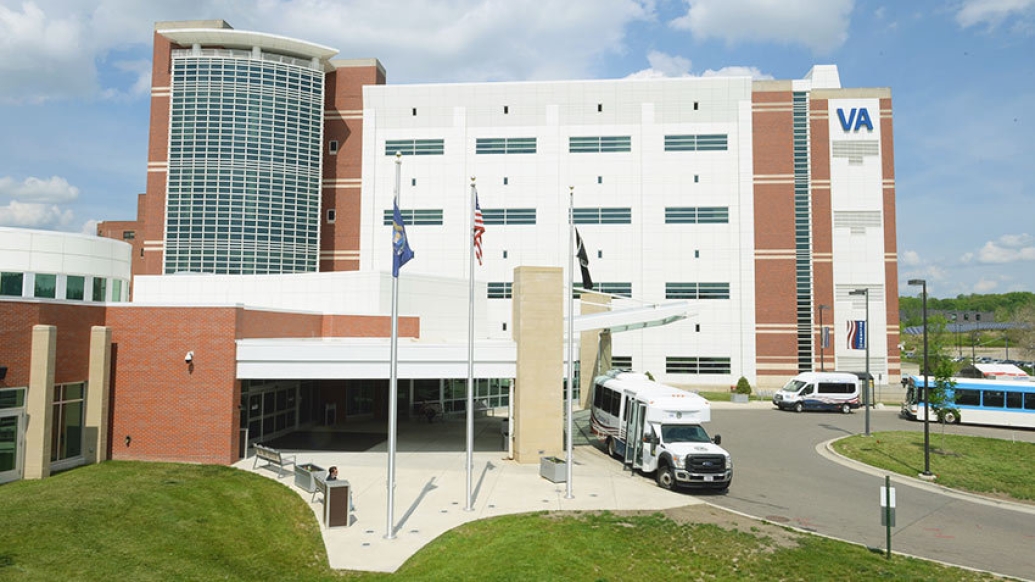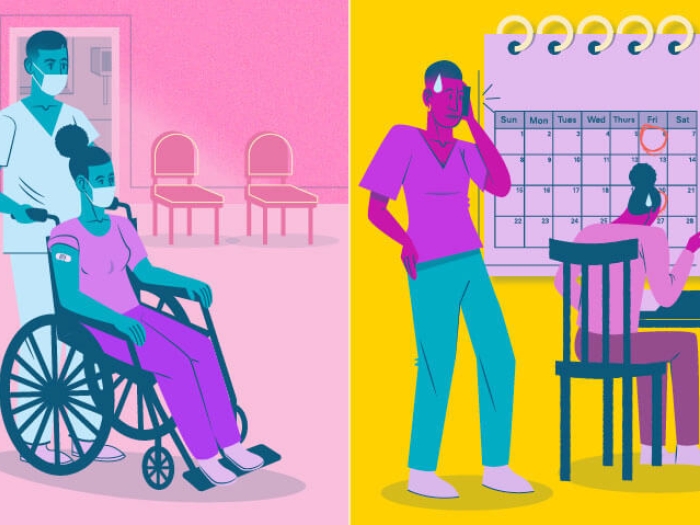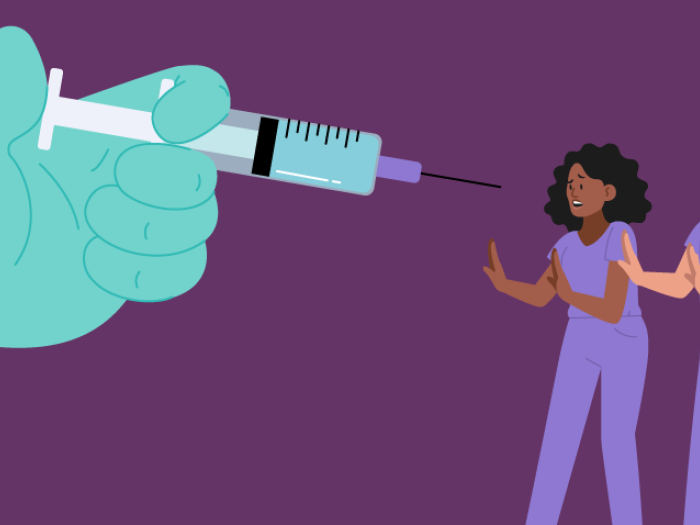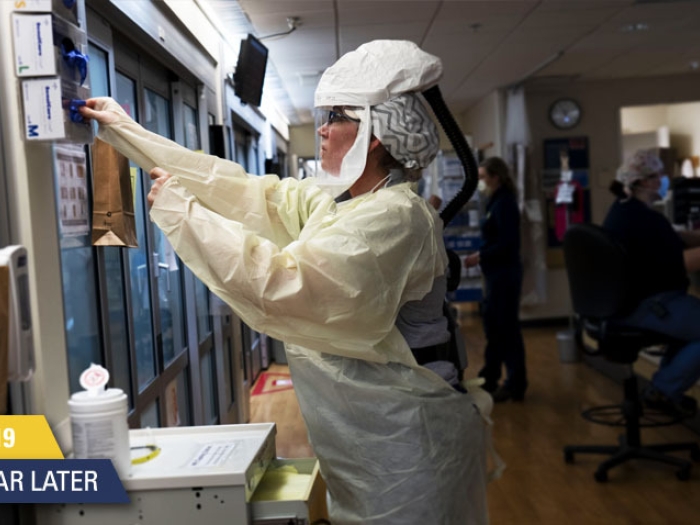Three VA physicians reflect on activating the “Fourth Mission” of the nation’s veteran care system, to serve the nation in a time of crisis.
5:14 PM
Authors |

The United States Department of Veterans Affairs was founded with a core mission of providing healthcare to the nation's veterans. Indeed, the Veterans Health Administration has evolved from a single facility established for Civil War veterans to the largest integrated healthcare system in the United States, serving over 9 million veterans annually in its 170 hospitals and over 1,100 outpatient facilities.
In 1982, Congress passed the Health Resources Sharing and Emergency Operation Act whereby by the VA was made available to care for non-veteran patients based on the needs of the facilities' respective states. This has subsequently become known as the VA's "Fourth Mission."
Last year, during the first wave of the COVID-19 pandemic, the VA activated this Fourth Mission and provided 1,500 acute and intensive care beds across the nation to the Federal Emergency Management Agency for the care of non-Veteran patients.
Our VA medical center in Ann Arbor received this assignment on April 5, 2020 in response to the initial overwhelming surge of COVID-19 cases in southeast Michigan. Over the ensuing few months, the VA Ann Arbor Healthcare System cared for the second most non-Veteran patients in the nation.
On April 22, 2021 – just over one year later – Michigan's government asked the VA hospitals in our state to again care for non-veteran patients as a high number of Michigan hospitals were at or over-capacity due to the latest wave of COVID-19. Likely due to the high prevalence of the B.1.1.7 strain in Michigan – which is more contagious and virulent than the prior dominant strain – Michigan had become the hottest of hotspots in this continuing pandemic.
SEE ALSO: The Non-Veteran Experience at VA hospitals
Fortunately, non-VA hospitals throughout the state of Michigan, though stretched, were able to accommodate this new surge in patients, and no additional non-veteran patients were admitted to the VA.
As VA physicians who have spent most of our professional careers caring for veterans in Michigan, we stood ready to help. Fortunately, we have learned much over the past year—not only about how to interpret COVID-19 diagnostic studies and which medications are recommended for which patients, but, also, the experiences of patients at VA hospitals.
Patient care in the VA health system
The VA Ann Arbor has long been a leader in hospitalized veteran satisfaction among our peers. In fact, we were recently ranked fourth best in the nation among all VA hospitals in inpatient experience in the VA Survey of Healthcare Experiences of Patients.
Little was known, however, about non-veteran perceptions of VA-delivered care until we recently published a survey addressing this exact point in the Journal of General Internal Medicine.
We surveyed non-veterans who were hospitalized in two Michigan VA hospitals – Ann Arbor and Detroit – and reported that 87% of participants were satisfied with the VA care received, 78% would recommend VA to others and nearly all reported that VA care was the same as or superior to non-VA care.
We spoke to many of these non-veteran patients on the phone and asked what they liked and disliked about the care each had received at the VA. Importantly, a majority of patients rated nursing care as excellent and several commented about how responsive nurses were in addressing their care needs.
One illustrative example was this: "I had an accident with my stool, they cleaned me up, asked me if I could get to the bath, and they put a catheter in. They took good care of me…I just rang the buzzer and they were Johnny on the spot…".
VA physicians also received praise from those we spoke with including about their communication with family members outside of the hospital.
As one respondent told us: "[W]hen the doctors told me something, they also told me they would call [my husband] and let him know. They got to know him by first name. They were also able to call my son. They both kept the family informed."
We guess we shouldn't have been that surprised since the quality of care provided by VA medical centers has been compared to care delivered in non-VA facilities in a systematic manner and found that the VA compares favorably to other systems of care with regard to safety and effectiveness.
Nevertheless, we were surprised that non-veterans rated their care the same as or better than care received at hospitals from which they were transferred, and care received during previous hospitalizations. This positive perception of care at VA medical centers was noted in all care components, including nursing and physician care as well as the quality of discharge documentation.
And how did we have room for non-veterans during this time while other hospitals were stretched to maximum capacity this spring?
We suspect it was largely due to our successful vaccination strategy. Within our healthcare system, over 55% of our Veterans were fully vaccinated by the end of April, nearly two weeks before the state of Michigan met a similar milestone.
For most of last year, the number of veterans with COVID-19 closely tracked the number of patients with COVID-19 admitted to the hospitals of University of Michigan Health, our academic partner. The VA Ann Arbor had approximately 10% to 20% of the number of hospitalized patients with COVID-19 as U-M, a reflection of our size differences.
Since vaccinations have been available, however, the VA's COVID-19 hospitalization rates have been roughly 5% of those at the University.
Takeaways
What are the lessons?
First, we must not forget that the pandemic is made up of real patients.
In the midst of infectious disease fears and pervasive personal protective equipment, it is often easy to overlook the little things, the human things, that make for an excellent patient experience. "Johnny on the spot" nursing staffs and physicians doubling down on efforts to contact family members during visitor restrictions separate good from great facilities.
SEE ALSO: Military Microbiologists With a Surprising Connection
Next, pandemics require all hands on deck. Many non-veteran patients credited ancillary hospital staff, such as housekeeping and food services, for their positive experience. Pandemic planning should thus involve the entire spectrum of patient care contributors.
Similarly, leaders should roll up their sleeves and be present both to support staff and to understand emotional or contextual issues that may arise.
And finally, leaders must remain organized and focused. Leaders must be able to live simultaneously on the ground and at 30,000 feet, understanding both the front lines and the overall strategy.
With every storm there is a rainbow — an emblem of hope following the flood in Genesis, a representation of the physical and spiritual body in the Hindu chakras and a symbol of possibility in The Wizard of Oz's "Somewhere Over the Rainbow." We feel honored to work in a healthcare system that represents that rainbow.
Just as veterans served during both peacetime and war to make the country safe for all Americans, the system that serves them opened up its hospitals again to ensure that all Michiganders can receive the high-quality and patient-centered care they expect and deserve when they must come to the hospital.
As providers, we stand ready to serve any patient, veteran or non-veteran, who may come through our doors.
Paper cited: "The Non-Veteran Experience at Veterans Affairs Medical Centers During the COVID-19 Pandemic: a Survey-Based Study," J Gen Intern Medicine. DOI: 10.1007/s11606-021-06643-6

Explore a variety of healthcare news & stories by visiting the Health Lab home page for more articles.

Department of Communication at Michigan Medicine
Want top health & research news weekly? Sign up for Health Lab’s newsletters today!





